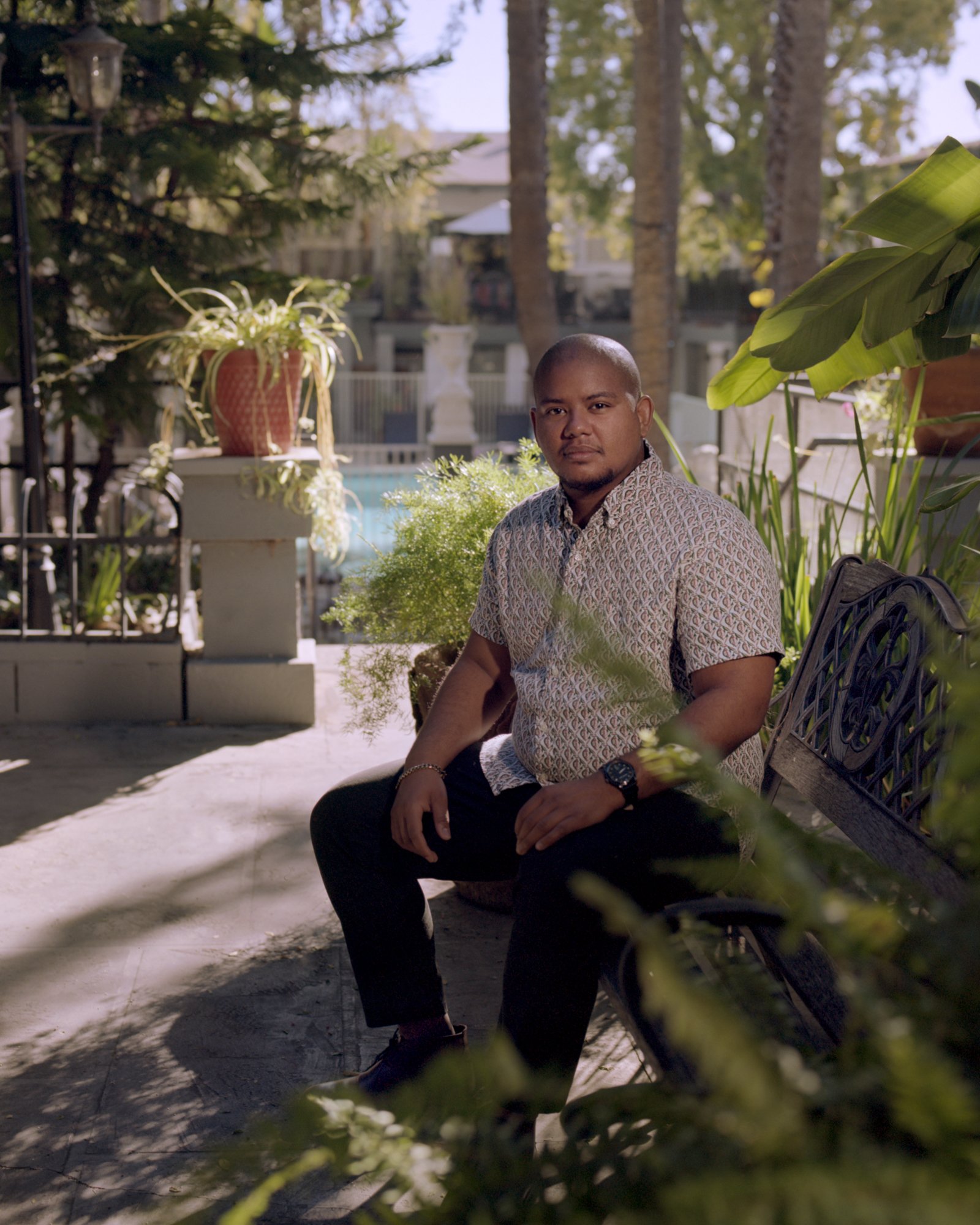Whether talking about ballroom culture or Beyonce’s award winning album Renaissance, Sydney Baloue has his opinions and is more than ready to share. The multi-hyphenated journalist, former co-executive producer on MAX’s Legendary, soon-to-be-published author, and voguing enthusiast refuses to settle as he continues to climb to new heights in an industry that often disregards the contributions of queer creatives. Baloue has made it so that, try as you might, you cannot place him in a singular defining box. The versatile House of Xtravaganza member exceeds most definitions synonymous with tenacious and innovative, and as he surpasses even those, we’ll simply just have to settle for: Iconic.
“It’s something that our ancestors, or trans-ancestors, and African ancestors have passed down to us, as far as our movement and our body expression”
Baloue’s career spans many years and even continents, but the catalyst to it all didn’t start in a boardroom or classroom, but the ballroom. “Voguing is therapy, it’s community, it’s release, it’s expression. I'm at my best when voguing. It's when I'm not thinking. It's almost like your brain and your body are one,” Baloue says.
First popularized in the late 1960s during the era of the Harlem Ballroom by Black and POC LGBTQIA+ members, balls were a well-kept secret that summoned the best to shed their day mask and don their alter-egos or their true identities. By the late 1980’s, the performance style would sky-rocket to fame in the mainstream media thanks to admirers like Madonna and Jenni Livingston who aided in cracking open the door to Houses such as LaBeija, Ebony, Ninja, and of course Xtravaganza. Ballroom didn’t just give Sydney his family and House, it gave him purpose and even trans-cestral history. “It’s something that our ancestors, or trans-ancestors, and African ancestors have passed down to us, as far as our movement and our body expression,” Baloue says.
Known not only for his runway presence but also his writing, Baloue utilized his storytelling ability to document his experience in ballroom and use it to generate larger conversations about queer culture on a national platform. After his op-ed piece on ‘realness’ appeared in the New York Times, showrunners for HBO’s Legendary reached out to Baloue and offered him a spot in the writers room and to co-executive produce the show. Baloue accepted. “It was an incredible experience,” Baloue says of his time on the project for both season 1 and 2.
Baloue has since continued writing with his work appearing in Them, Into Magazine, Vice, and The New York Times. He was also a writer on the CW’s series Tom Swift, and has utilized his voice and gift for written word to write about the need for compelling and queer narratives getting on television.
“When it comes to being in a writer's room, I know that all of those experiences have informed my worldview, that's what they want when you're getting staffed for a show. They want a unique point of view,” Baloue says. “What's the way that you see the world that's different from anybody else? And besides just being a Black trans man in America, I think ballroom and being a member of Xtravaganza also gives me a unique perspective.”
Centered in Baloue’s work, laced in every word and compound sentence, is community. Seeing more Black, queer, and trans-masc people taking on profound roles of leadership in the media is one of his major focuses. While queerness is having its “moment” in the media now, Baloue is still waiting in the wings to take up even more space -- and not just in front of the screen.
“I want the voices of my communities to be heard. I want their names on the books; I want people to know these are the people who made this culture possible. And you should give them credit where credit is due,” Baloue says. Sydney isn’t working for clout or for the sake of being employed, but to leave behind a legacy that resembles that of his predecessors. In doing so, wants to open new doors for other queer people to walk through, just as he’s been able to.
“It really comes down to having possibility models. There's so few of us who are even visible on this larger stage of entertainment or journalism, and I want them to know their lives matter, and I see them,” Baloue shares.
“When I think about who I am in the world, so much of my experiences and everything that I've done, I stand on the shoulders of giants, the people who came before me, who paved the way. It's all the trans women who founded the ballroom scene: Crystal LaBeija, Pepper LaBeija, Dorian Corey, Paris Dupree, or Angie Xtravaganza, all of these mothers who created the groundwork for this incredible and beautiful community. I think about how they opened those doors and how they took this little bit of the world that they were allotted, and they just blew it wide open for so many other people to walk through. That, in so many ways, is sort of how I see where I'm at. I'm one of the lucky ones who is able to break through — and if I can use whatever power that I obtain to expand that door for so many other people in the future, hell yeah, I'm gonna do it.”
About the Author
Kiersten Adams is a freelance writer and creative storyteller currently focused on documenting Black life, art, and culture in Philadelphia. Her interests lie in exploring ideas of Black liberation through the lenses of rest & wellness, community care, and connection to the environment. She has contributed writing about these topics to The Philadelphia Inquirer, SICK Magazine, Midnight & Indigo, and other publications. In addition to her writing, she serves as a project manager and community organizer for S(tree)twork, a public art project, and sits on the program & marketing Board for the UC Green.





